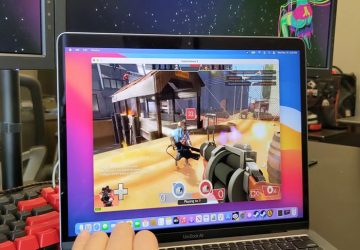
A peek inside some leading research labs shows how scientists-turned-detectives are painstakingly decoding what causes autoimmune diseases and how to stop the immune system from attacking you instead of protecting you.
It’s a huge challenge. By the National Institutes of Health’s newest count there are about 140 autoimmune diseases affecting tens of millions of people.
Unraveling them requires patience, persistence — and sophisticated technology to even see the suspects. Researchers use laser-powered machinery and brightly colored fluorescent dyes to tell rogue cells from normal ones.
Take Type 1 diabetes, caused when cells in the pancreas that produce insulin are gradually killed off by rogue T cells. In a biomedical engineering lab at Johns Hopkins University, researchers examine mouse pancreas cells on a computer screen. Red marks the killer cells. In yellow are “peacemaker” cells that are supposed to tamp down autoimmune reactions – but they’re outnumbered.
Another type of immune cell, B cells, drive autoimmune diseases by producing antibodies that mistake healthy tissue for foreign invaders. At NIH, Dr. Iago Pinal-Fernandez studies myositis, a poorly understood group of muscle-weakening diseases. His research shows rogue antibodies don’t just damage muscles by latching onto their surface. They can sneak inside muscle cells and disrupt their normal functions in ways that help explain varying symptoms.
“When I started, nothing was known about the type of autoimmune disease we study. Now finally we’re able to tell patients, ’You have this disease and this is the mechanism of disease,” he said.
In another NIH lab, Dr. Mariana Kaplan’s team is hunting the root causes of lupus and other autoimmune diseases — what makes the immune system run amok in the first place — and why they so often strike women.
Today's drugs tamp down symptoms but don't correct the problem. Now in early-phase clinical trials are treatments that instead aim to fix dysfunctional immune pathways.
At Hopkins, scientists are working on next-generation versions, not yet ready to try in people. In one lab, they're developing nanoparticle-based treatment to dial down pancreas-killing cells in Type 1 diabetes and ramp up “peacemaker” cells.
And in another Hopkins lab, researchers are developing what they hope will become more precise treatments for rheumatoid arthritis, lupus and other antibody-driven illnesses – drugs that search out and destroy “bad” B cells.
—-
The Associated Press Health and Science Department receives support from the Howard Hughes Medical Institute’s Department of Science Education and the Robert Wood Johnson Foundation. The AP is solely responsible for all content.
This is a documentary photo story curated by AP photo editors.
latest_posts
- 1
 Excelling at Discussion: Genuine Examples of overcoming adversity
Excelling at Discussion: Genuine Examples of overcoming adversity - 2
 Web designers for Independent ventures
Web designers for Independent ventures - 3
 Lahav 433 head Asst.-Ch. Meni Benjamin named as police officer investigated for breach of trust
Lahav 433 head Asst.-Ch. Meni Benjamin named as police officer investigated for breach of trust - 4
 5 Different ways Macintosh is Prepared to Overwhelm Gaming, Even Against Windows
5 Different ways Macintosh is Prepared to Overwhelm Gaming, Even Against Windows - 5
 大谷翔平「伝説的瞬間」賞受賞 リーグ優勝決定シリーズ第4戦の3本塁打、10奪三振(日刊スポーツ)
大谷翔平「伝説的瞬間」賞受賞 リーグ優勝決定シリーズ第4戦の3本塁打、10奪三振(日刊スポーツ)
 資生堂、今期520億円の最終赤字に転落 米州事業で468億円の減損(ロイター)
資生堂、今期520億円の最終赤字に転落 米州事業で468億円の減損(ロイター) ソフトバンクG、純利益2.9兆円 投資事業好調で過去最高 9月中間連結決算(時事通信)
ソフトバンクG、純利益2.9兆円 投資事業好調で過去最高 9月中間連結決算(時事通信) Eli Lilly weight-loss drug appears to suppress binge-eating signal, small study finds
Eli Lilly weight-loss drug appears to suppress binge-eating signal, small study finds Instructions to Clean and Really focus on Your Lab Precious stone
Instructions to Clean and Really focus on Your Lab Precious stone 【スターダム】フワちゃん〝復帰〟舞台裏 岡田社長が告白「本人は全くプロレスを軽く見てないです」(東スポWEB)
【スターダム】フワちゃん〝復帰〟舞台裏 岡田社長が告白「本人は全くプロレスを軽く見てないです」(東スポWEB) なぜ大人が沼る?「ぬい活」が生む“静かな熱狂”、お泊りや保育園……新市場の“今”(ビジネス+IT)
なぜ大人が沼る?「ぬい活」が生む“静かな熱狂”、お泊りや保育園……新市場の“今”(ビジネス+IT) Different Film Classification: What's Your Go-To for Amusement
Different Film Classification: What's Your Go-To for Amusement 西武、今井達也のMLB挑戦を容認 高橋光成に続き2人目…本部長「強い意志を受け止めた」(Full-Count)
西武、今井達也のMLB挑戦を容認 高橋光成に続き2人目…本部長「強い意志を受け止めた」(Full-Count) Vote in favor of your Number one method for commending a birthday
Vote in favor of your Number one method for commending a birthday













